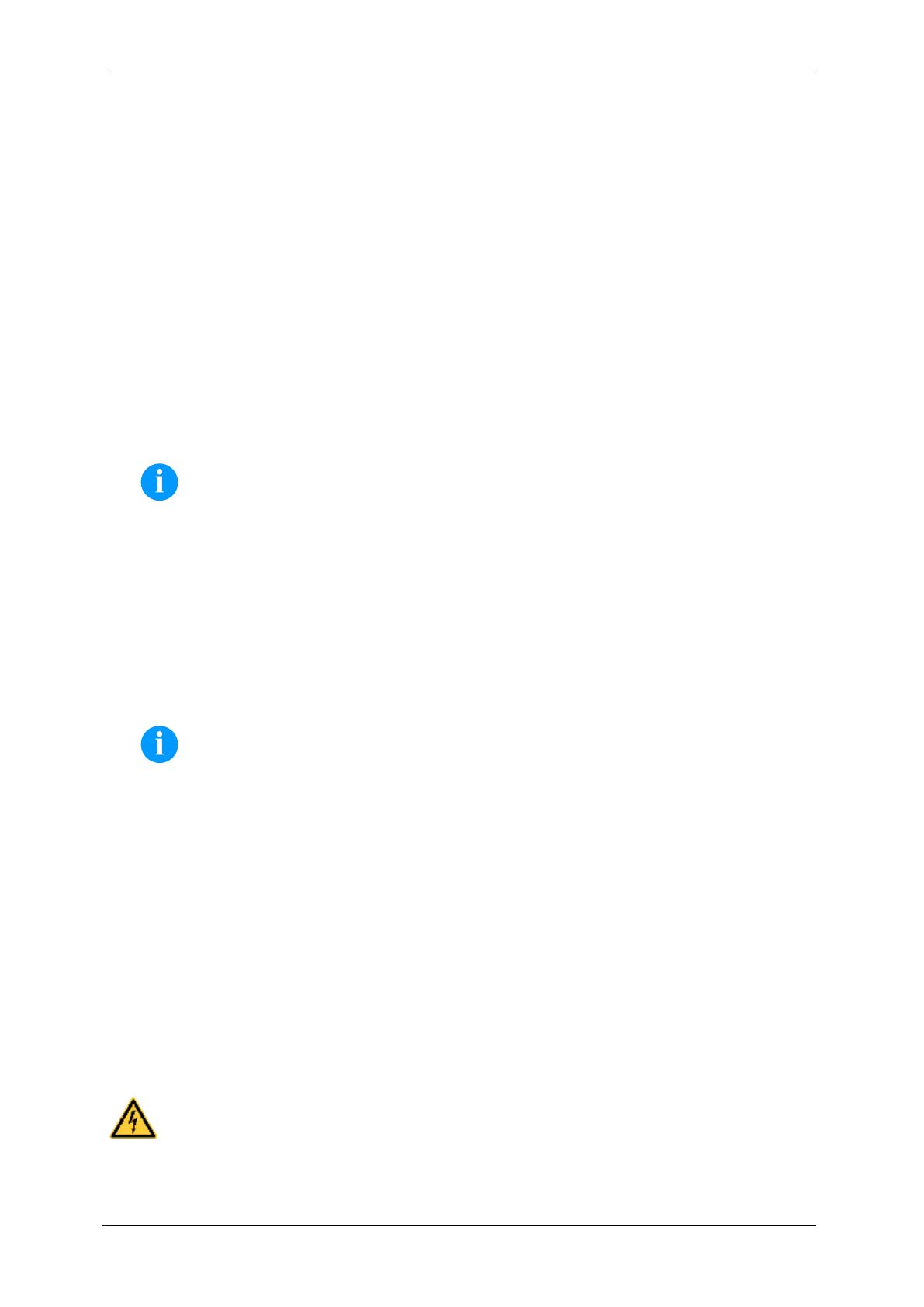
Intended Use
• The direct print module is a state-of-the-art device which complies with the recognized safety-related rules and regulations.
Despite this, a danger to life and limb of the user or third parties could arise and the direct print module or other property
could be damaged while operating the device.
• The direct print module may only be used while in proper working order and for the intended purpose. Users must be safe,
aware of potential dangers and must comply with the operating instructions. Faults, in particular those which affect safety,
must be remedied immediately.
• The direct print module is solely intended to print suitable media which have been approved by the manufacturer. Any
other or additional use is not intended. The manufacturer/supplier is not liable for damage resulting from misuse. Any
misuse is at your own risk.
• Intended used includes heeding the operating manual, including the maintenance recommendations/regulations specified
by the manufacturer.
Safety Notes
• The direct print module is designed for power supply systems from 110 … 230 V AC. Connect the direct print module only
to electrical outlets with a ground contact.
NOTICE!
When changing the mains voltage the fuse value is to adapt accordingly (see 'Technical Data').
• Couple the direct print module to devices using extra low voltage only.
• Before making or undoing connections, switch off all devices involved (computer, printer, accessories etc.).
• Operate the direct print module in a dry environment only and do not get it wet (sprayed water, mist etc.).
• Do not operate the direct print module in explosive atmosphere and not in proximity of high voltage power lines.
• Operate the direct print module only in an environment protected against abrasive dust, swarf and other similar impurity.
• Maintenance and servicing work can only be carried out by trained personnel.
• Operating personnel must be trained by the operator on the basis of the operating manual.
• Depending on use, ensure that clothing, hair, jewellery and similar personal items do not contact the exposed rotating parts
and/or the moving parts (e.g. print carriage).
NOTICE!
With the open printing unit (due to construction) the requirements of EN 60950-1/EN 62368-1 regarding fire
protection casing are not fulfilled. These must be ensured by the installation into the end device.
• The print unit and parts of it (e.g. motor, printhead) can get hot during printing. Do not touch the printhead during operation.
Cool down the print unit before changing material, removal or adjustment.
• Never use highly inflammable consumables.
• Carry out only the actions described in these operating instructions. Any work beyond this may only be performed by the
manufacturer or upon agreement with the manufacturer.
• Unauthorized interference with electronic modules or their software can cause malfunctions.
• Other unauthorized work or modifications to the direct print module can endanger operational safety.
• Always have service work done in a qualified workshop, where the personnel have the technical knowledge and tools
required to do the necessary work.
• There are warning stickers on the direct print modules that draw your attention to dangers. Therefore the warning stickers
are not to be removed as then you and others cannot be aware of dangers and may be injured.
• The direct print module must be integrated with the Emergency Stop circuit when it is incorporated into the overall
machine.
• All isolating safety equipment must be installed before starting-up the machine.
DANGER!
Danger to life and limb from power supply!
Do not open the casing.




















